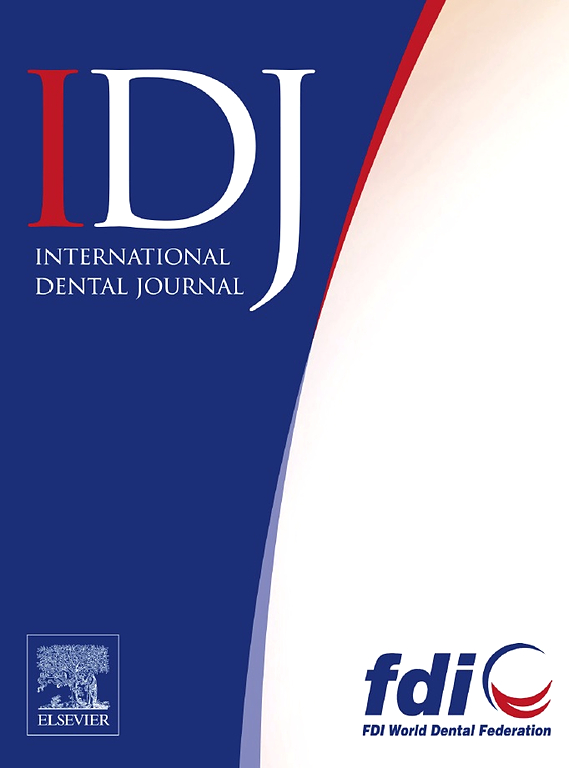Interpretable Ensemble Learning Predicts Antibiotic Resistance in Treponema denticola Using Expert Classifiers
IF 3.2
3区 医学
Q1 DENTISTRY, ORAL SURGERY & MEDICINE
引用次数: 0
Abstract
Introduction and Objectives
Antibiotic resistance is a global health concern, contributing to prolonged hospital stays, increased medical costs, and higher mortality rates. Addressing antimicrobial resistance (AMR) in periodontal infections requires targeted therapies and a multifaceted approach. This study aims to predict and classify AMR genomic sequences in Treponema denticola, a key pathogen in periodontal disease, using machine learning (ML).
Methods
UniProt FASTA sequences were used to investigate AMR in T. denticola. Data were retrieved and preprocessed using the BioPython library in a Jupyter Notebook. A structured approach included data exploration, feature extraction, and visualization. Four classification models – Random Forest, Support Vector Machine (SVM), Gradient Boosting, and Neural Network (Multilayer Perceptron Classifier) – were optimized using specific hyperparameters. Model performance was evaluated using fivefold stratified cross-validation. A Voting Classifier, combining multiple models, was implemented to enhance predictive accuracy.
Results
The Voting Classifier outperformed Random Forest, SVM, Gradient Boosting, and Neural Network models, achieving the highest test accuracy (96.46%) and F1-score (0.9646). High accuracy was also demonstrated by SVM and Neural Networks (95.58%), but the robustness of the Voting Classifier was highlighted by its ability to balance accuracy with low log loss (0.1504).
Conclusion
This study highlights the effectiveness of the Voting Classifier in classifying AMR genomic sequences in T. denticola. The findings underscore the potential of interpretable ML approaches for advancing AMR research in periodontal pathogens and informing targeted therapeutic strategies.
Clinical Relevance
The ability to accurately predict AMR in T. denticola using ML models like the Voting Classifier can significantly enhance clinical decision-making. By identifying resistance patterns, clinicians can tailor antibiotic therapies more effectively, reducing treatment failures and mitigating the spread of resistance. This approach also supports the development of novel antimicrobial agents and strengthens public health surveillance efforts, particularly in resource-limited settings where periodontal infections are prevalent.
使用专家分类器预测密螺旋体抗生素耐药性的可解释集成学习
前言和目的抗生素耐药性是一个全球性的健康问题,导致住院时间延长、医疗费用增加和死亡率升高。解决牙周感染的抗菌素耐药性(AMR)需要有针对性的治疗和多方面的方法。本研究旨在利用机器学习技术预测牙周病关键病原体密螺旋体(Treponema denticola) AMR基因组序列并进行分类。方法采用uniprot FASTA序列检测齿齿田鼠AMR。使用Jupyter Notebook中的bioppython库检索和预处理数据。结构化方法包括数据探索、特征提取和可视化。四种分类模型-随机森林,支持向量机(SVM),梯度增强和神经网络(多层感知器分类器)-使用特定的超参数进行了优化。采用五重分层交叉验证评估模型性能。结合多个模型,实现了一种投票分类器,以提高预测精度。结果投票分类器优于随机森林、支持向量机、梯度增强和神经网络模型,达到了最高的测试准确率(96.46%)和f1得分(0.9646)。支持向量机和神经网络也显示出较高的准确率(95.58%),但投票分类器的鲁棒性突出体现在其平衡准确率和低对数损失(0.1504)的能力。结论本研究突出了投票分类器对齿齿田鼠AMR基因组序列分类的有效性。这些发现强调了可解释的ML方法在推进牙周病原体AMR研究和告知靶向治疗策略方面的潜力。临床相关性使用像投票分类器这样的ML模型准确预测牙齿t的AMR的能力可以显著提高临床决策。通过识别耐药模式,临床医生可以更有效地定制抗生素治疗,减少治疗失败并减轻耐药性的传播。这种方法还支持开发新型抗菌剂并加强公共卫生监测工作,特别是在牙周感染普遍存在的资源有限的环境中。
本文章由计算机程序翻译,如有差异,请以英文原文为准。
求助全文
约1分钟内获得全文
求助全文
来源期刊

International dental journal
医学-牙科与口腔外科
CiteScore
4.80
自引率
6.10%
发文量
159
审稿时长
63 days
期刊介绍:
The International Dental Journal features peer-reviewed, scientific articles relevant to international oral health issues, as well as practical, informative articles aimed at clinicians.
 求助内容:
求助内容: 应助结果提醒方式:
应助结果提醒方式:


